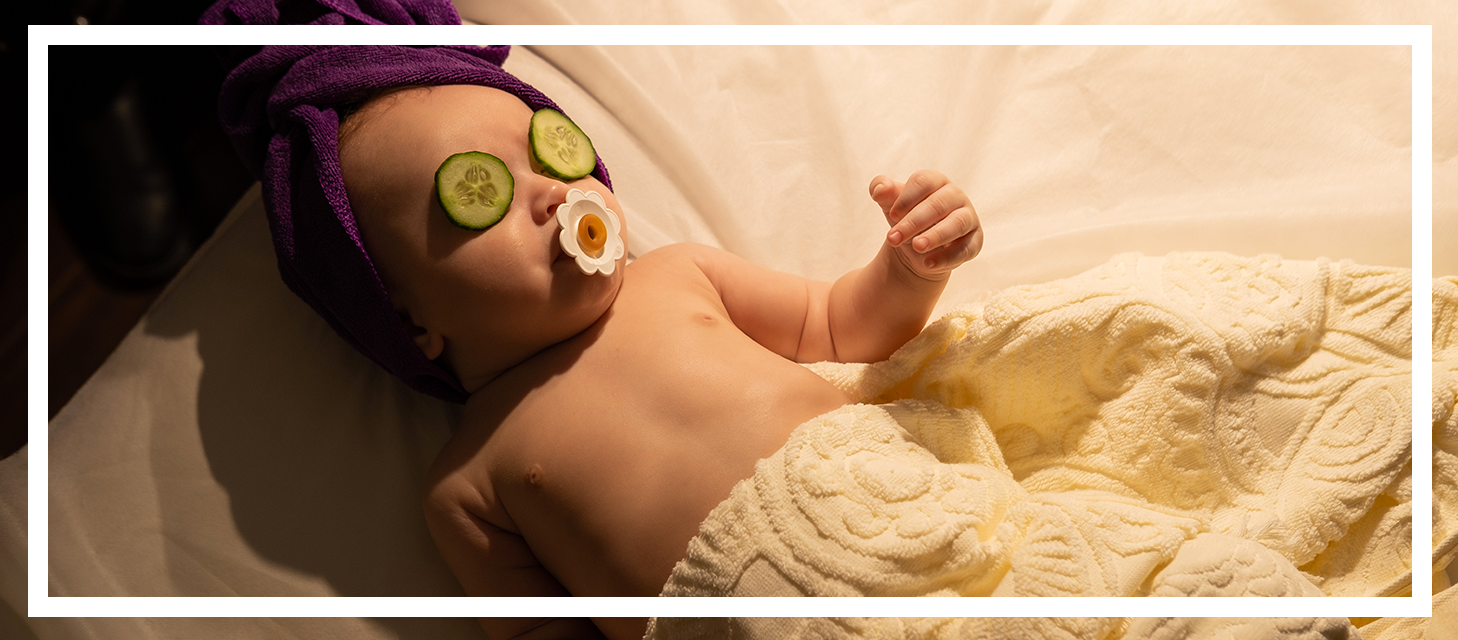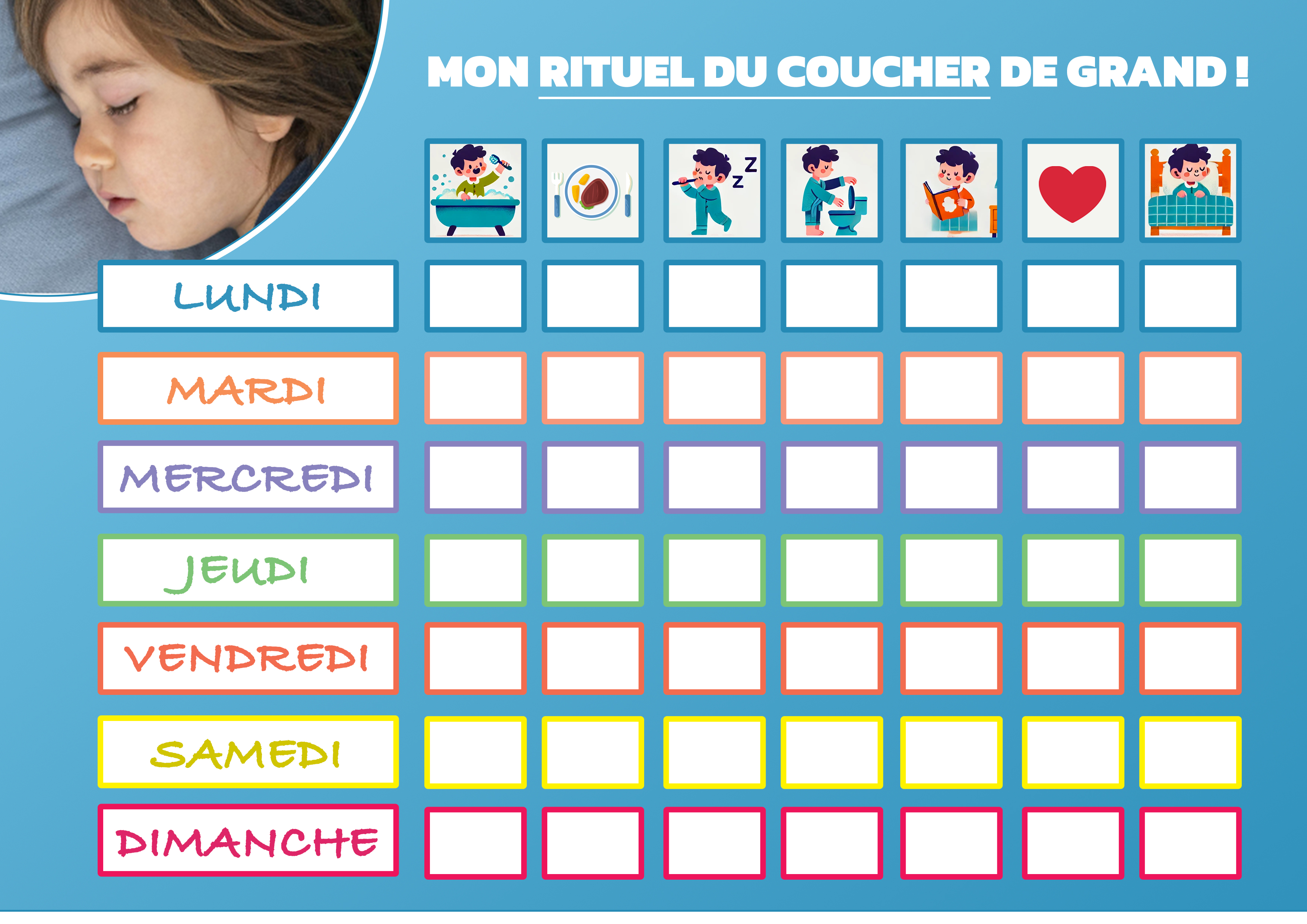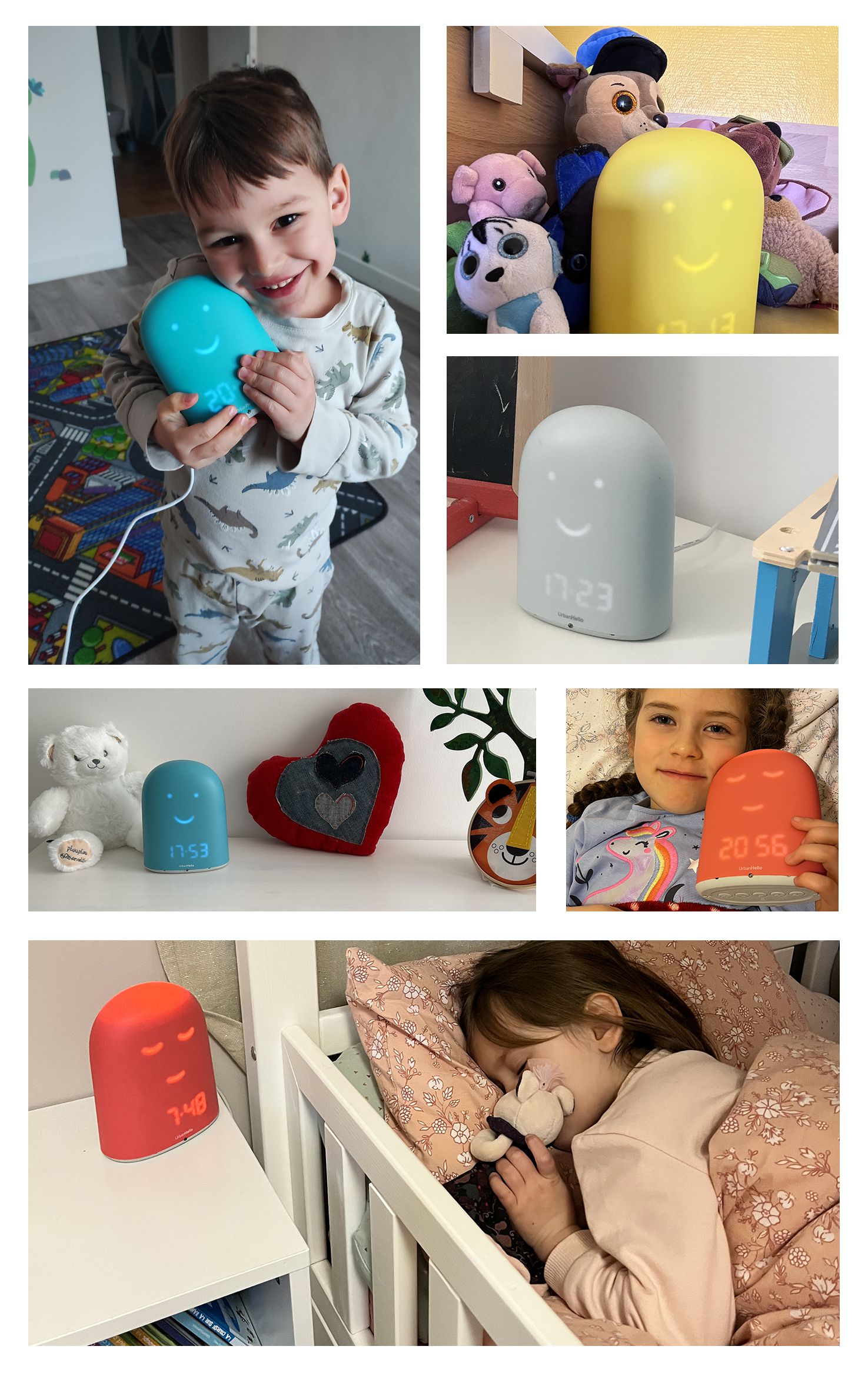Bedtime ritual: our 10 tips for a good night!

Bedtime can often be one of the trickiest parts of the day with your little one. Between tears, endless cuddles, and multiple night wakings, it can quickly become exhausting for the whole family. But one simple habit can turn that chaos into a calm and comforting experience: the baby bedtime routine.
Establishing a soothing nighttime routine is a powerful way to help your baby fall asleep peacefully and enjoy more restful nights. This ritual, made up of simple and consistent steps, gives your child a sense of security and comfort. Every evening, they’ll know exactly what to expect — helping them relax and approach sleep with confidence.
The baby bedtime routine isn’t just a checklist of tasks. It’s also a moment to bring calm and reassurance to your baby. Starting early means laying the foundation for healthy, long-lasting sleep. And when your baby sleeps better, so do you!
In this article, we’ll explore why a bedtime routine is so essential for your baby’s well-being, how to adapt it to their age, and we’ll share practical examples to guide you through each stage of their development.
We’ll also look at the role of comfort objects, naps, and helpful tools like reward coupons and sticker charts to turn bedtime into a shared moment of joy.
Why is a bedtime routine so important?
The baby bedtime routine is more than just a habit — it’s your secret weapon for turning evenings into a peaceful and reassuring experience for your baby (and let’s be honest, for you too!).
Here’s why it matters so much:
👉 A need for calm
After a full day of exploring and learning, your baby needs to slow down — just like we do after a long day at work. Gentle activities like a soothing lullaby, a warm bath, or a cuddle help them wind down gradually. When those same comforting actions are repeated every evening, they create the perfect atmosphere for sleep to settle in naturally.
👉 A need for security
Babies thrive on clear, predictable cues because the world is still full of unknowns for them. A consistent bedtime routine becomes a reassuring anchor — a gentle message that says: "It’s bedtime now. You’re safe."
And that’s where the real magic happens! Thanks to the predictable sequence of familiar steps — bath, pajamas, storytime — your baby knows exactly what comes next. This helps them prepare mentally and emotionally for sleep.
When your baby has these regular cues, they feel more in control of what’s happening. That sense of security is incredibly comforting and helps ease them into the night with confidence.
👉 A need for connection
Beyond the practical side, a baby bedtime routine is also a moment of love and closeness — a precious opportunity to end the day with tenderness. It’s a time to recharge emotionally, share cuddles, and bond. These peaceful minutes together strengthen your connection, helping your baby feel loved, secure, and ready to drift off into dreamland.

How does an effective baby bedtime routine work?
The key to a successful bedtime routine is all about consistency. It’s not so much the exact time you start, but the predictable sequence of steps that matters most. Whenever possible, try to follow the same order each night. For your baby, repetition is calming — they know exactly what’s coming next, which helps ease them into sleep.
That said, the first 21 days (or three weeks) are especially important for establishing the new habit. You’ll need to be a bit more structured during this initial phase. But don’t worry — once the routine is in place, the occasional delay or change won’t throw everything off.
Every family has its own rhythm, and that’s perfectly okay! There’s no one-size-fits-all baby bedtime routine. What works for a friend’s baby might not suit your home life. The goal is to find a balance that works for everyone — your baby, of course, but also you.
If reading a bedtime story feels like a chore, why not swap it for a lullaby or a made-up tale? What truly matters is that the routine feels enjoyable for everyone, and that it’s something you can stick to with ease.
Creating the right atmosphere also helps your baby wind down: gradually lower the volume around the house and dim the lights. A calmer, softer environment gives your baby the best chance to fall asleep peacefully.
Don’t hesitate to write down your bedtime routine and share it with anyone caring for your baby while you’re away. It’s a simple way to make sure your child feels safe and settled — even in your absence!
When should you start a baby bedtime routine?
The earlier, the better!
From the very first month, introducing a baby bedtime routine is essential to help your little one start distinguishing between day and night — and it may even help them sleep through the night sooner. At this age, their internal clock isn’t fully developed. Alongside short sleep cycles, known as ultradian rhythms, a consistent bedtime routine creates clear signals between daytime activity and nighttime rest. By repeating the same gentle, soothing steps each evening, your baby starts to associate this routine with sleep, making it easier to fall asleep — and, with any luck, enjoy longer, more restful nights for everyone.
Establishing a calming routine from the start also lays a strong foundation to help prevent future sleep issues. The earlier it becomes part of your baby’s life, the more it becomes a comforting anchor at bedtime — and believe us, that’s a real gift for the whole family!
Over time, the benefits of the routine will only grow stronger. As your baby gets older, they’ll begin to anticipate this moment and prepare for it mentally, making bedtime smoother. And the best part? You’re teaching them healthy sleep habits from an early age — a valuable skill that will serve them well for life.
That said, the routine should evolve as your baby grows. In the very beginning, keep it short and simple to avoid overstimulation. Just a few minutes of calm is enough to set the stage for good sleep. Later, as your child develops, you can gradually lengthen the routine and adjust the activities — but remember: simplicity and consistency are your best friends.
The “perfect” baby bedtime routine from 0 to 18 months
For babies between 0 and 18 months, the baby bedtime routine should be simple, soothing, and repetitive — ideally lasting around 20 to 30 minutes. At this age, consistency is your greatest ally in helping your little one ease into sleep. Every step matters, from bath time to the final lullaby, to help your baby relax and understand that bedtime is near.
Here’s an example of a three-step bedtime routine that’s easy to follow and can be adapted to suit your preferences — a gentle way to guide your baby toward more peaceful (and hopefully longer!) nights.
👉 Start with washing up and getting into pajamas
The bedtime routine begins with a quick wash — a key moment to help your baby unwind. There’s no need for a full bath every night; what matters is the calming effect of water, which should last no more than 10 minutes. Being gently immersed in warm water gives your baby a familiar sensory cue that the day is winding down and it’s time to relax. For newborns, some skin-to-skin time after the bath can be especially soothing and strengthens the emotional bond.
If your baby has sensitive skin or you prefer a simpler approach, a quick wipe-down with a warm washcloth works just as well. You can follow it with a light massage to relax them even more. After this calm moment, it’s time for pajamas — a clear signal that bedtime is coming. While dressing your baby, try humming the same gentle tune each evening. This familiar sound cue will help your baby recognize that sleep is just around the corner.
👉 Goodnight and the final bottle
After the bath and getting into pajamas, it’s time to say a final “goodnight” to Mum or Dad — whichever parent isn’t in charge of the bedtime routine that evening. This brief moment of separation is meaningful for your baby, but try to keep it short and sweet. Saying goodnight to both parents at once can sometimes feel overwhelming right before sleep. A quick kiss, a warm smile, and then let baby continue their routine without extra stimulation.
Next, head to a calm and cozy spot for the final bottle or nursing session. Choose a quiet corner with soft lighting — like a small bedside lamp — and a low noise level. This is a time for winding down, but not quite for falling asleep yet! It’s important that your baby stays awake during this last feed so they clearly understand it’s not bedtime just yet. You can gently keep them alert by speaking softly or helping them burp.
Take this opportunity to give your baby a final big cuddle — a special moment of closeness and comfort. Don’t hesitate to keep humming the same gentle lullaby if possible, reinforcing a feeling of safety and calm. This shared connection is perfect for soothing your baby before the last step in the routine: transitioning to the crib for a (hopefully) restful night ahead!
👉 Lullaby and bedtime
The final step in the routine is often your baby’s favorite: the lullaby moment. This time, Mum or Dad (whoever’s on bedtime duty) can softly sing a short song with gentle lyrics. No need for a full concert — just 20 to 30 seconds is enough. Think of it as a calming mantra — the final signal that lets your baby know it’s time to drift off to sleep. Ideally, you’ll use the same lullaby every night. It becomes a strong audio cue, a melody of comfort that helps your baby recognize the end of the day.
To keep the bedtime routine consistent and magical, it’s important that this lullaby stays the same — whether it’s sung by Mum, Dad, Grandma, or the babysitter. This repetition of sound and gestures provides a deep sense of security, even if the person putting your baby to bed changes. It’s a sweet moment — but keep it brief — because now it’s time to settle into bed.
Gently place your baby into their crib or cot while they are still awake, with their comfort object if they’re old enough (usually from around 8 months). The goal is for your baby to fall asleep on their own, in a familiar space, so they learn to self-soothe and sleep independently. A soft "I love you" whispered as you leave the room brings the bedtime routine to a close, leaving your baby feeling safe, loved, and ready for a restful (hopefully!) night ahead.
The best lovey? One that smells like you! A t-shirt or soft item that carries your scent can be a wonderful choice, as it helps your baby feel like you’re still close by. From this age onward, including the lovey in the bedtime routine is a simple yet powerful way to comfort your little one and support more peaceful sleep.

The bedtime routine after 18 months
From 18 months onward, the bedtime routine enters a new phase: it becomes essential to set clear boundaries to help your child wind down. As your toddler grows, they’ll want to play more, stay close to you, and delay bedtime — and that’s completely normal! But this is where your role becomes key: by helping them manage their time, you’re providing a secure framework so they understand when it’s truly time to sleep. Keeping a fairly consistent bedtime, based on early signs of tiredness (rubbing eyes, yawning, etc.), is a great anchor.
If your child is caught up in play or you miss the exact timing for an activity like bath or brushing teeth, don’t panic. You can occasionally skip a step and move to the next one, as long as you explain why. For example, if tooth brushing is missed, gently remind your child that skipping it too often could mean a trip to the dentist. Giving your child simple explanations — and a bit of responsibility — helps them feel involved in the routine and more motivated to follow it, especially when they realize they have some control.
This approach also takes pressure off you as parents. A little flexibility, while keeping a consistent structure, can make bedtime feel less stressful and more soothing for everyone.
👉 Sample bedtime routine for a 2–3 year old
The steps remain simple and structured. Start with tooth brushing and a quick trip to the bathroom to freshen up. A splash of water on the face serves as a sensory cue that bedtime is near. Then it’s time for one last bathroom break before heading into the bedroom to wind down.
Next comes a favorite part for many little ones: reading a short book or talking through the day with Mum or Dad. This calm recap helps settle their thoughts and emotions before bed. Before slipping under the covers, take a moment to say goodnight to dolls, stuffed animals, and everything in the room.
Finally, wrap up the routine by going over the steps together — a fun little responsibility game that makes your child feel proud. End with a big cuddle and the same lullaby each night. Once the routine is complete, place your child in bed while they’re still awake, and whisper a loving “I love you” as you leave the room.
Light noises — like the shower running or soft conversation near the door — can help your child feel safe and understand they’re not alone, even as the rest of the house winds down for the night.
Tips & tricks for a successful bedtime routine
👉 Use a sticker chart!
A bedtime sticker chart is a fantastic way to make the evening routine fun and motivating for your child! This simple visual schedule — showing each step of the routine alongside the days of the week — becomes a playful tool to encourage responsibility. Each time your child completes a step, they get to add a sticker. And if they make it through the night without waking up, they can place another sticker the next morning!
In addition to helping your child follow the routine, this system builds confidence and gives them a sense of control over bedtime.
Below, you’ll find an example of a printable bedtime chart on A4 paper with steps like: bath, dinner, tooth brushing, wash-up, storytime, cuddles, and lights out!
You can also download a blank version to create your own personalized “sleep routine planner.”

👉 A Day/Night Clock
A day/night clock can be a valuable tool to support your child’s bedtime routine and help them understand the concept of time — which is still very abstract at a young age. These clocks use simple visual cues, like a color change or icon, to show when it’s time to stay in bed and when it’s okay to get up. For young children, this kind of clear visual signal is comforting and easy to follow, without needing to understand a clock. It gently encourages self-regulation and helps your child feel more confident and independent.
A great example is the REMI by UrbanHello — a smart multifunctional kids’ clock that fits perfectly into a calming bedtime routine. With its light-up display, REMI shows your child when it’s time to stay in bed and when it’s okay to wake up. It can also play lullabies, monitor sleep quality, and even function as a baby monitor!
Perfect for establishing a routine
"My children finally found a rhythm thanks to REMI. We’re so happy to have it as part of our daily life. REMI has become a little friend to my kids. They get concerned if REMI isn’t ‘asleep’ yet or if he’s still sleeping (they don’t fully grasp the concept of time yet). I highly recommend it for families looking to set up a consistent routine for school."
– Review on CONSOBABY – September 9
👉 Use “bedtime passes”
“Bedtime passes” are a clever little trick for children who have a hard time staying in bed and always find a reason to call Mum or Dad. This playful system works like a game: each evening, your child gets three passes they can use once each during the night. For example, a “pass for a cuddle,” a “pass for a question,” and a “pass for a glass of water.” The idea is to limit unnecessary trips out of bed while still giving your child a sense of reassurance and control — they know they can ask for help, but need to choose the right moment!
As a bonus, if your child doesn’t use their passes during the night, you can reward their effort at the end of the week with a small treat or surprise. It’s a great way to motivate them and encourage independence, turning bedtime into a calmer and more positive experience for everyone.
A routine for naptime?
A naptime routine can be just as beneficial as a bedtime routine, as it helps your child recognize moments of rest throughout the day. For little ones, these time markers are essential in learning the difference between day and night. But there are a few key differences between naptime and bedtime! A nap isn’t quite the same as overnight sleep, so the routine should be shorter and lighter.
You might try a gentle 5–10 minute routine with soothing actions similar to those used at bedtime, but adapted for the daytime: for example, a soft song or lullaby that’s slightly different from the nighttime one — signaling to your baby that it’s just a short rest, not a full night’s sleep. To reinforce this rhythm, it’s best to avoid making the room completely dark or silencing all background noise. A soft light and the presence of familiar daytime sounds help your child understand that this nap is a different kind of rest — a safe pause while the world continues gently around them.
Discover REMI
THE SMART BABY MONITOR 😊
REMI and its app bring together everything you need to manage your baby’s sleep!
Its mission? Helping families sleep better — from birth up to age 10.
I bought REMI for my 4-year-old son who didn’t want to sleep alone anymore after his little sister was born. Thanks to the remote wake-up system and bedtime stories I can play from a distance, the issue is completely resolved! I 100% recommend this purchase!






 My Child Won’t Sleep Alone: How to Help Them Gain Independence
My Child Won’t Sleep Alone: How to Help Them Gain Independence
 Letting Baby Cry It Out: Effective, But At What Cost?
Letting Baby Cry It Out: Effective, But At What Cost?
 White noise for baby : a scientific research !
White noise for baby : a scientific research !
 What are the positive effects of napping on memory?
What are the positive effects of napping on memory?
 What Time Should Your Child Go to Bed? The Ideal Bedtime by Age!
What Time Should Your Child Go to Bed? The Ideal Bedtime by Age!